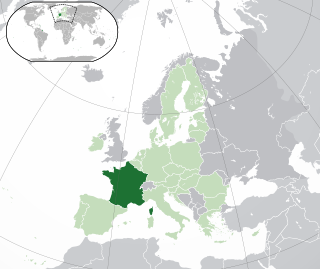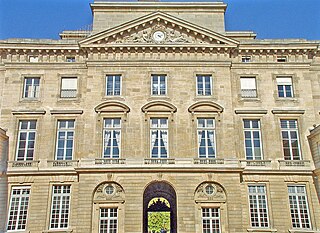Related Research Articles

A mint is an industrial facility which manufactures coins that can be used as currency.

Pont Neuf is a station on Line 7 of the Paris Métro. Located in the heart of old Paris, it is connected to the Île de la Cité by the nearby Pont Neuf after which it is named. It opened in 1926 with the line's extension from Palais Royal–Musée du Louvre to Pont Marie.

The Royal Theatre of La Monnaie is an opera house in central Brussels, Belgium. The National Opera of Belgium, a federal institution, takes the name of this theatre in which it is housed—La Monnaie in French or De Munt in Dutch—referring both to the building as well as the opera company. As Belgium's leading opera house, it is one of the few cultural institutions to receive financial support from the Federal Government of Belgium. Other opera houses in Belgium, such as the Vlaamse Opera and the Opéra Royal de Wallonie, are funded by regional governments.

The Monnaie de Paris is a government-owned institution responsible for producing France's coins. Founded in AD 864 with the Edict of Pistres, it is the oldest continuously running minting institution and one of the oldest extant companies in the world.

Monégasque euro coins feature two separate designs for the first two series of coins, and also two separate designs for the €1 and €2 coins for the first series. All of the coins are inscribed with the word "Monaco" and the twelve stars of Europe. The Monégasque euro coins are minted by the Monnaie de Paris.

Jacques-Jean Barre was the 17th chief coin engraver at the Monnaie de Paris between 1842 and 1855. In this position, he engraved and designed French medals, the Great Seal of France, bank notes and postage stamps, as well as the first Swiss coinage which was initially minted there.
Before the introduction of the euro, the current eurozone members issued their own individual national coinage, most of which featured mint marks, privy marks and/or mint master marks. These marks have been continued as a part of the national designs of the euro coins, as well. This article serves to list the information about the various types of identifying marks on euro coins, including engraver and designer initials and the unique edge inscriptions found on the €2 coins.

France has a rich selection of gold and silver commemorative coins. These coins are minted by Monnaie de Paris, which is a state owned industrial and commercial company. Monnaie de Paris has a distinctive different mark guaranteeing "Monnaie de Paris's quality, origin and authenticity of its collector coins". A second mark, representing the symbol of Master Engraver, Hubert Lariviere, which is engraved on their coins; the French horn, a few waves and a fish's silhouette. Lariviere has since retired.
France has a rich selection of gold and silver commemorative coins. These coins are minted by Monnaie de Paris, which is a state owned industrial and commercial company.
France has a rich selection of Gold and Silver commemorative coins. These coins are minted by Monnaie de Paris, which is a state owned industrial and commercial company.
France has a rich selection of Gold and Silver commemorative coins. These coins are minted by Monnaie de Paris, which is a state owned industrial and commercial company.
France has a rich selection of Gold and Silver commemorative coins. These coins are minted by Monnaie de Paris, which is a state owned industrial and commercial company.
France has a rich selection of Gold and Silver commemorative coins. These coins are minted by Monnaie de Paris, which is a state owned industrial and commercial company.
France has a rich selection of Gold and Silver commemorative coins. These coins are minted by Monnaie de Paris, which is a state owned industrial and commercial company.

Euro proof sets are proof sets of the coins of the Euro. Proof coins were originally coins minted to test the dies used in the coin minting process and to archive sets of coins minted every year. Modern proof sets are minted in higher numbers and are sold to the public and numismatists for collecting. Modern proof coins are often minted using special processes in order to make the coins more aesthetically pleasing. Mints in countries in the European Union who use the Euro often make proof sets of the upcoming year's Euro coins. Sets from these countries are listed below.

Euro gold and silver commemorative coins are special euro coins minted and issued by member states of the Eurozone, mainly in gold and silver, although other precious metals are also used in rare occasions. Monaco was one of the first countries allowed to introduced the euro (€) on 1 January 2002, although they are not officially part of the Eurozone. Since then, the Monnaie de Paris in France have been minting both normal issues of Monégasque euro coins, which are intended for circulation, and commemorative euro coins in gold and silver.
Cécile Morrisson is a French historian and numismatist. She is Director of Research emeritus at the French National Center for Scientific Research and specializes in the study of the Byzantine Empire.

The Musée du 11 Conti is a museum dedicated to the manufacturing techniques and the know-how of the Monnaie de Paris. It is located in the 6th arrondissement in Paris. The museum houses exhibition rooms and workshops. The museum is interactive, showcasing touchable items, tactile graphics and olfactory devices.
References
- "Monnaie de Paris". Archived from the original on 2008-05-14. Retrieved 2008-04-14.